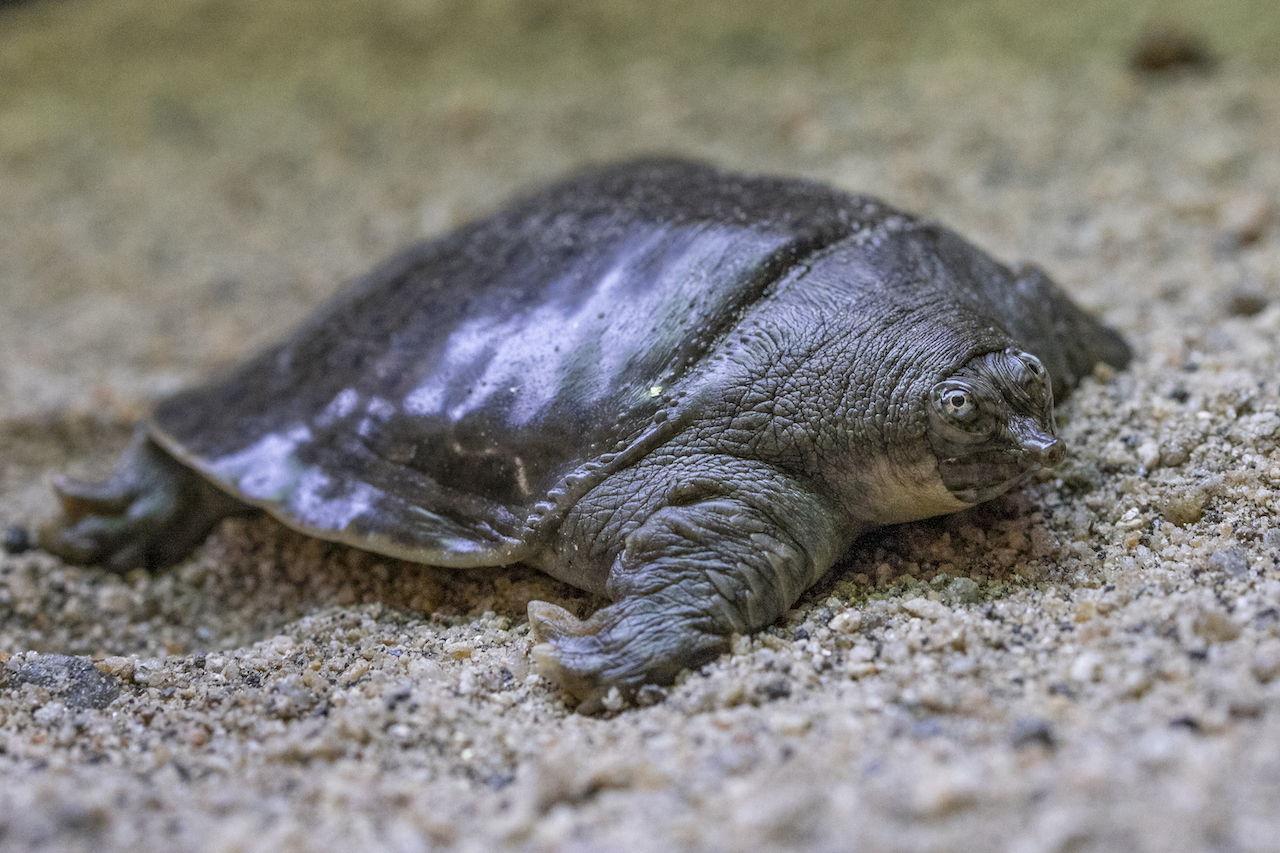El Zoológico de San Diego da la bienvenida a 41 crías de tortuga de caparazón blando, dando esperanza a una especie en peligro crítico de extinción.
Hace más de 20 años, el Zoológico de San Diego recibió a 3 tortugas de caparazón blanco y cabeza estrecha (Chitra indica). Pertenecen a una «rara especie de reptil» originaria de la India, según las describe la institución en un comunicado. Desde entonces, el equipo de especialistas las ha estado monitoreando para aumentar las posibilidades de reproducción, ya que se consideran en peligro de extinción.
Así lo consiguieron.
Un hito en la conservación de la especie

Los años de espera finalmente terminaron. Después de décadas de intentos, 41 crías eclosionaron este verano. Éste es un gran logro para los especialistas del zoológico, ya que esta especie de tortugas tarda en alcanzar la madurez sexual hasta 10 años. Y lo que es más: sus nidos son difíciles de encontrar, porque desovan por las noches y esconden los huevos bajo tierra, para protegerlos.
Los investigadores del San Diego Zoo Wildlife Alliance (SDZWA) encontraron los huevos en el hábitat natural de los reptiles. Para garantizar su supervivencia, los colocaron en un nido artificial que les permitiera monitorear los nacimientos. De esta forma, pudieron controlar «las temperaturas y la humedad óptimas para los nacimientos», explica la institución en un comunicado.

Al respecto, Kim Gray, curadora de herpetología e ictiología en el San Diego Zoo, explica que éste es un hito en la conservación de las tortugas de caparazón blando y cabeza estrecha:
“Nos hemos centrado en cuidar de estas tortugas durante mucho tiempo, y parte de ese cuidado es obtener una mayor comprensión de la historia natural de la especie”, explica la especialista.
Generalmente, los ejemplares silvestres viven en ríos y arroyos profundos, distribuidos entre India, Bangladesh y Nepal. Según Gray, el conocimiento que se adquirió en este caso de éxito ayuda a “[…]brindar un mejor apoyo a nuestros socios en la India”, de manera que las tortugas de caparazón blando prosperen en su hábitat natural.
